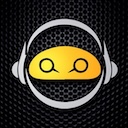The video chronicles the revolutionary journey of Linux, from Linus Torvalds's student project to its pivotal role in modern computing.
In 1991, while the Cold War was drawing to a close and grunge music was about to explode with Nirvana's release of 'Nevermind', a Finnish student named Linus Torvalds initiated a groundbreaking journey that would significantly alter the landscape of computing forever. At the University of Helsinki, Torvalds found himself dissatisfied with the proprietary limitations of Minix, an educational operating system developed for teaching purposes that did not allow for modification or redistribution. Instead of remaining constrained, he embarked on creating his own operating system kernel, not for profit or recognition but as a hobby project aimed at developing something better and more controllable that could be shared with others. His 1991 posting on a news forum laid the groundwork for Linux, which has since evolved to become the foundation of a wide array of operating systems, including Android and the servers supporting major platforms like Google and Facebook. Understanding Linux necessitates a grasp of its predecessor, Unix, developed in the 1970s by Ken Thompson and Dennis Ritchie at Bell Labs, who also created the C programming language. Where traditional operating systems were often bound to specific hardware and encumbered by complexity, Unix introduced a modular design philosophy that championed simplicity and efficiency. It allowed for the combination of small utilities into more complex tasks, making it particularly popular in academic and research settings. However, as Unix's adoption grew, proprietary versions proliferated, leading to a fragmented marketplace and giving rise to the need for a more unifying and inclusive system. This was ideal for the open-source revolution spearheaded by Richard Stallman in the 1980s with the GNU project, which sought to create a fully free operating system while waiting for a suitable kernel—one that Linus would unwittingly provide in the form of his Linux kernel. Upon its first release, the Linux kernel was a minimalistic product yet set in motion a wave of global collaboration that saw its rapid improvement and diversification into numerous distributions (distros). Over the years, various distros tailored Linux to different user needs—from robust enterprise solutions like Red Hat Enterprise Linux to user-centric offerings like Ubuntu, each contributed uniquely to Linux's evolution toward becoming a universal platform. By the late 1990s, recognition from major companies like IBM signaled a significant shift in perception, viewing Linux not merely as a niche operating system but as a pivotal part of enterprise strategy. With broad applications across desktop environments, servers, and embedded systems, Linux's influence cannot be overstated, powering everything from data centers to smart devices, with an unexpected resurgence in mobile technology through Android. This humble beginning in Torvalds's Finnish dorm has blossomed into an infrastructure essential to the modern digital world, while Torvalds himself remains a revered figure in software development.
Content rate: A
The content provides a thorough, informative perspective on the development and impact of Linux, detailing key figures, milestones, and implications in a balanced manner that's both engaging and educational. Plus, it supports its claims with corroborative evidence and thoroughly explains complex ideas in an accessible way.
technology history software open_source
Claims:
Claim: Linux powers over 70% of web servers.
Evidence: Multiple reports indicate that Linux dominates the server market because of its performance, stability, and low cost, corroborated by various market analyses.
Counter evidence: Some reports cite that although Linux has a significant share, the exact percentage may fluctuate based on market shifts and new entrants to the server market.
Claim rating: 8 / 10
Claim: Linux is used by organizations like NASA, CERN, and the NY Stock Exchange.
Evidence: These organizations have publicly acknowledged using Linux for its stability and security, evidenced by various technical documentation and job postings that specify Linux administration requirements.
Counter evidence: Critics argue that while some departments within these organizations use Linux, not all components may rely on it, suggesting a mixed environment of various operating systems.
Claim rating: 9 / 10
Claim: Linus Torvalds became a somewhat mythical figure in the tech world.
Evidence: Torvalds's unique development style and the cultural impact of Linux have indeed created a significant lore around him, with many in tech communities revering him for his contributions.
Counter evidence: However, some detractors point to his controversial management style and public criticisms as reasons why he may not be universally admired.
Claim rating: 7 / 10
Model version: 0.25 ,chatGPT:gpt-4o-mini-2024-07-18
